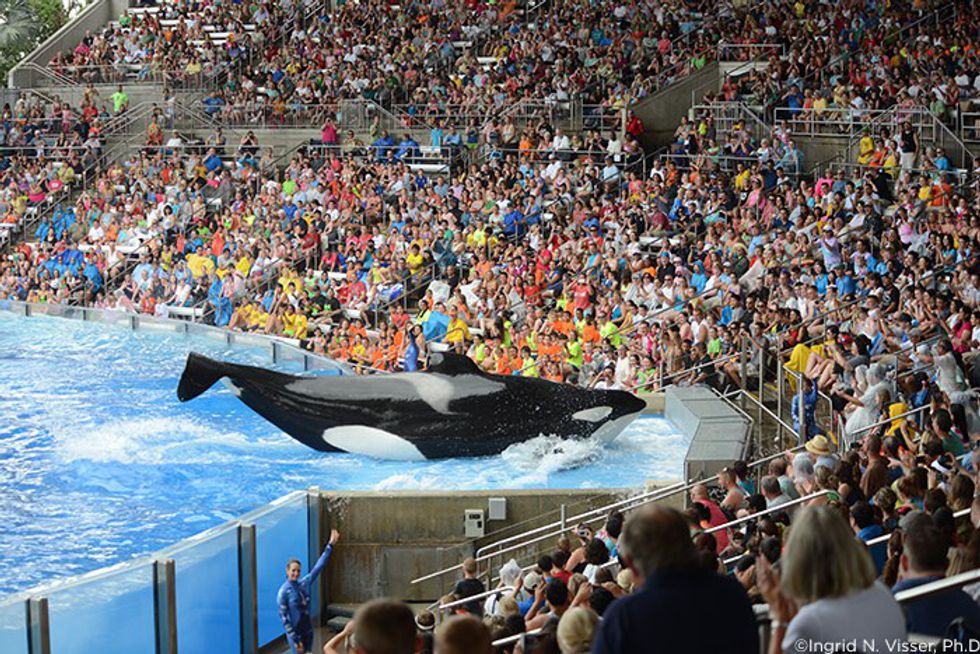Most of us have already heard the news about the gorilla who got shot after a little boy fell into his enclosure. But in case you haven’t, here’s a little synopsis of how it went down:
In Cincinnati Zoo, Ohio, there once lived a peaceful, 17-year-old gorilla named Harambe. Harambe weighed around 450 pounds (~200 kilograms) and enjoyed eating fruits, caterpillars, and sun-baking on warm afternoons. One regular, sunny, Saturday afternoon in May 2016, a little four-year-old boy managed to make his way into the gorilla enclosure.
Initially, everything was fine. Harambe seemed to be taking care of the little boy (whose name we cannot reveal to this day). He began to pat him gently and even tried to help him pull up his pants.
But then, startled by the screaming crowd, Harambe began to drag the boy away and through the shallow water in the enclosure. You can watch a video of the incident below:
After around 10 minutes, the little boy escaped with a concussion and a few scrapes. Harambe, unfortunately, did not meet the same fate. The gorilla was shot dead by the zoo’s dangerous animal response team.
Director Thane Mayard said that the boy was in “a life-threatening situation,” and although the gorilla was not attacking the boy, “it could have been very bad.”
Tranquilizing Harambe would have taken too long. As they don't take effect immediately, the little boy would have been left alongside an aggravated gorilla for five or so minutes. Not even the zoo officials could know what an “extremely strong” gorilla would do in its agitated state.
Animal experts claim that the gorilla was not trying to harm the boy, but was merely treating him as one of his own. Gorillas, are in fact, a peaceful species that will not attack unless under threat. But unfortunately they do not know that humans are a lot more fragile than their own kind. Therefore, the zoo officials believed that the little boy was in a very dangerous situation. Having being “violently dragged and thrown,” Manyard believes that the zoo officials “made a tough choice,” but “the right choice because they saved that little boy’s life.”
So who’s fault was it that Harambe died?
Was it the four-year old boy’s fault? He must have been a mischievous child to have run off from his parents and managed to maneuver himself into a gorilla exhibit. His mother even reported having remembered him mentioning that he wanted to go and play with the gorillas…
Or was it his parent’s fault? Clearly, the boy needed to have had a stricter upbringing. His mother, Michelle Gregg, was there with him and should have kept a closer eye on him. Many are outraged at the mother’s lack of attention to the child. Although she stated that “accidents happen,” her negligent supervision was a costly one, resulting in the death of a fellow primate.
Or, perhaps, the zoo’s dangerous animal response team who made the decision to shoot the gorilla are to blame. Could there have been another method in coaxing Harambe away from the little boy? Did they really have to kill him? Gorillas generally live to around 40, so at 17, Harambe was technically still a young adult – much like many of us at college today. There have been incidents of friendly gorilla-and-child interactions, such as the one below:
If we can’t blame any of these people, then ultimately, the Cincinnati Zoo should hold the blame, right? Zoo officials believe the boy crawled through a railing barrier and then fell into the moat. The zoo should have ensured that all enclosures had double barriers and were absolutely unable to be impeded upon.
It’s easy to point fingers. That’s what we like to do.
But I would like to know when we are all going to realize that keeping wild animals in cages is just plain wrong.
Have we learnt nothing from the Tilikum’s story and the killing incidents in SeaWorld, Florida? The killer whale (living up to his name) reportedly drowned three of his trainers over the course of 30 years. He had become aggressive in nature from his confinement, mistreatment and separation from his family.
And honestly, if I was kept in an enclosure, constantly watched by hundreds of people every day, I would want to attack my trainers as well.
Whales should not be kept in swimming pools, just as gorillas should not be kept in enclosures.
In all honesty, if we need somebody to blame it should be the Queen Hatshepsut of Egypt, who established the first real zoo in B.C. 1,500 by collecting animals from all over Africa.
How have zoos become so accepted throughout society today? While we claim to be “protecting” these animals by “conserving” them, incidents such as Harambe’s prove otherwise. Perhaps one day humans will become more enlightened. Perhaps one day we will realize that we need to have more respect for these creatures and cannot imprison them in cages.
Protected areas should be implemented around the world, habituating animals while they are free to migrate throughout their home as they should.
Harambe should not have been killed at Cincinnati Zoo. He should not have been kept there in the first place.





















